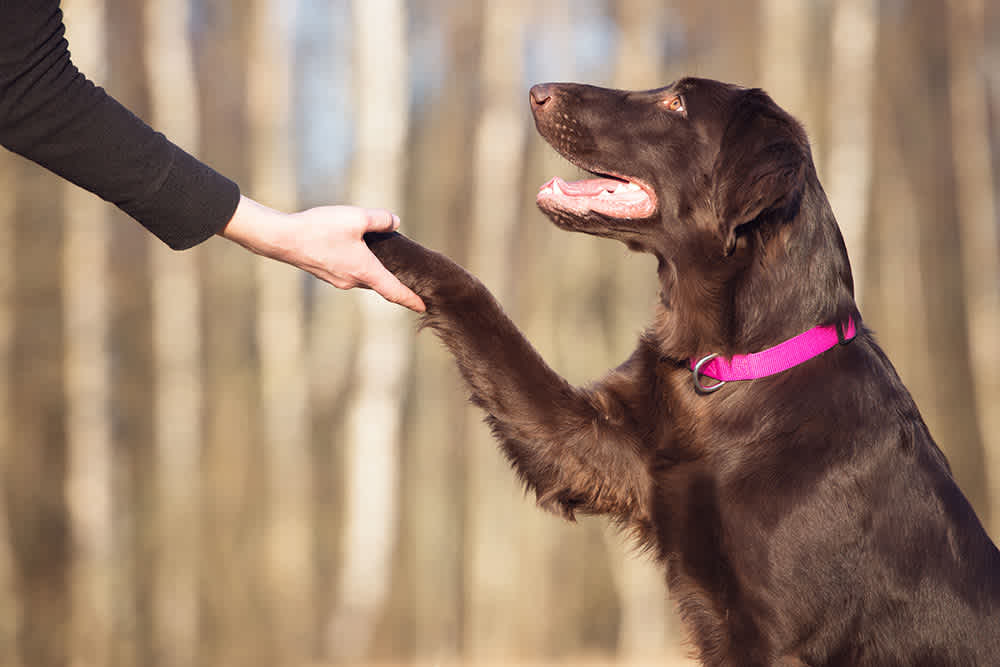Dog training near me for professional dog training.
Unlock Your Pet dog's Prospective With Expert Training Strategies
Recognizing and utilizing your pet's potential is a nuanced undertaking that requires an extensive strategy to training. As we take a look at the ins and outs of canine behavior and the essential elements of an organized training routine, it ends up being evident that the course to accomplishing a well-behaved pet is as much regarding the trip as it is the destination.
Recognizing Pooch Habits
Comprehending canine behavior is important for reliable pet training. Acknowledging these signals permits fitness instructors to much better interpret a pet dog's psychological state and respond appropriately.
Moreover, socialization plays a critical function fit a canine's habits. Very early direct exposure to different settings, individuals, and other animals helps develop a well-shaped personality, decreasing the likelihood of fear-based reactions in their adult years. It is also essential to recognize the breed attributes, as different types might show certain actions influenced by their historical functions.
Recognizing what motivates a certain pet-- be it food, appreciation, or play-- makes it possible for instructors to carry out strategies that motivate preferred behaviors. Inevitably, a detailed understanding of canine actions promotes an unified partnership in between pet dogs and their trainers, paving the means for effective training results.
Important Training Tools
Effective pet training requires a selection of devices that promote interaction and reinforce learning. These tools can dramatically improve the training procedure, making it much more reliable for both the fitness instructor and the pet dog.

Training treats are one more vital element, acting as a tangible benefit that motivates dogs to engage and discover. The use of training pads can also be helpful for house-training pups, offering an assigned area for them to relieve themselves.
Furthermore, training floor coverings or designated training rooms can create a concentrated atmosphere, assisting pet dogs connect certain locations with learning. Lastly, interactive playthings can be used to stimulate a pet's mind, advertising cognitive growth together with obedience training. By making use of these necessary tools, fitness instructors can establish an efficient and satisfying training experience that opens a dog's full possibility.
Positive Support Approaches
A wide variety of positive reinforcement approaches can dramatically boost canine training results by urging preferred habits with rewards. These strategies leverage the all-natural learning process of pet dogs, advertising a strong bond in between the trainer and the pet while promoting a setting favorable to learning.

Integrating play as a form of benefit can better enhance training sessions. Participating in a favored video game or providing a toy after an effective command not just rewards the dog but likewise improves their enjoyment of the training more tips here process. Progressively terminating treats as the pet learns can aid preserve their responsiveness to Look At This commands, guaranteeing they continue to be involved without depending solely on food.
Ultimately, positive reinforcement strategies are crucial for reliable pet dog training, as they advertise learning with an encouraging, encouraging technique that profits both pet and owner. - Board and train Raleigh NC
Typical Training Methods
Different canine training strategies are used to achieve desired habits and boost the bond in between canines and their owners. Among one of the most prevalent techniques are positive support, clicker training, and chain training.
Leash training concentrates on training dogs to stroll smoothly on a leash without drawing. This is necessary for security and control throughout strolls. Methods such as the 'stop-and-go' technique, where the handler quits walking when the pet dog pulls, aid impart great chain manners.
Another usual strategy is obedience training, which includes basic commands like rest, remain, and come. These commands are foundational permanently habits and can avoid undesirable activities. Each of these techniques can be adjusted to fit individual pet dogs, considering their special temperaments and learning styles, eventually leading to effective training end results.
Structure a Training Routine
Developing a constant training routine is important for enhancing preferred behaviors link in canines. A well-structured routine not just boosts learning yet additionally aids to build a strong bond between the dog and the handler (Board and train Raleigh NC). To develop an effective training regular, begin by setting aside certain times daily committed to training sessions. Short, constant sessions-- typically varying from 5 to fifteen minutes-- are typically more reliable than longer, infrequent ones.
Integrating variety into the training routine can keep the pet dog engaged and avoid dullness. Alternative between different commands, tricks, and works out to maintain focus and interest. In addition, consistency in commands and signs is important; utilize the same words and hand signals to avoid puzzling your pet.
Favorable reinforcement plays an important role in this process. Rewarding your dog right away after a desired behavior motivates repeating of that habits. Maintaining a tranquility and favorable ambience during training sessions cultivates a helpful learning setting.
Last but not least, hold your horses and consistent. Progress might differ, and some pets may require even more time to find out details commands - Board and train Raleigh NC. Adapt your regimen as needed, ensuring it remains delightful for both you and your pet dog
Final Thought
To conclude, effective dog training depends upon an extensive understanding of canine habits, making use of essential training devices, and the execution of positive reinforcement methods. By taking on usual training methods and establishing a constant training routine, proprietors can cultivate a cooperative and well-mannered friend. This strategy not only improves interaction between the pet and proprietor but also fosters a much deeper bond, inevitably opening the pet dog's complete potential and making certain a harmonious partnership in diverse atmospheres.